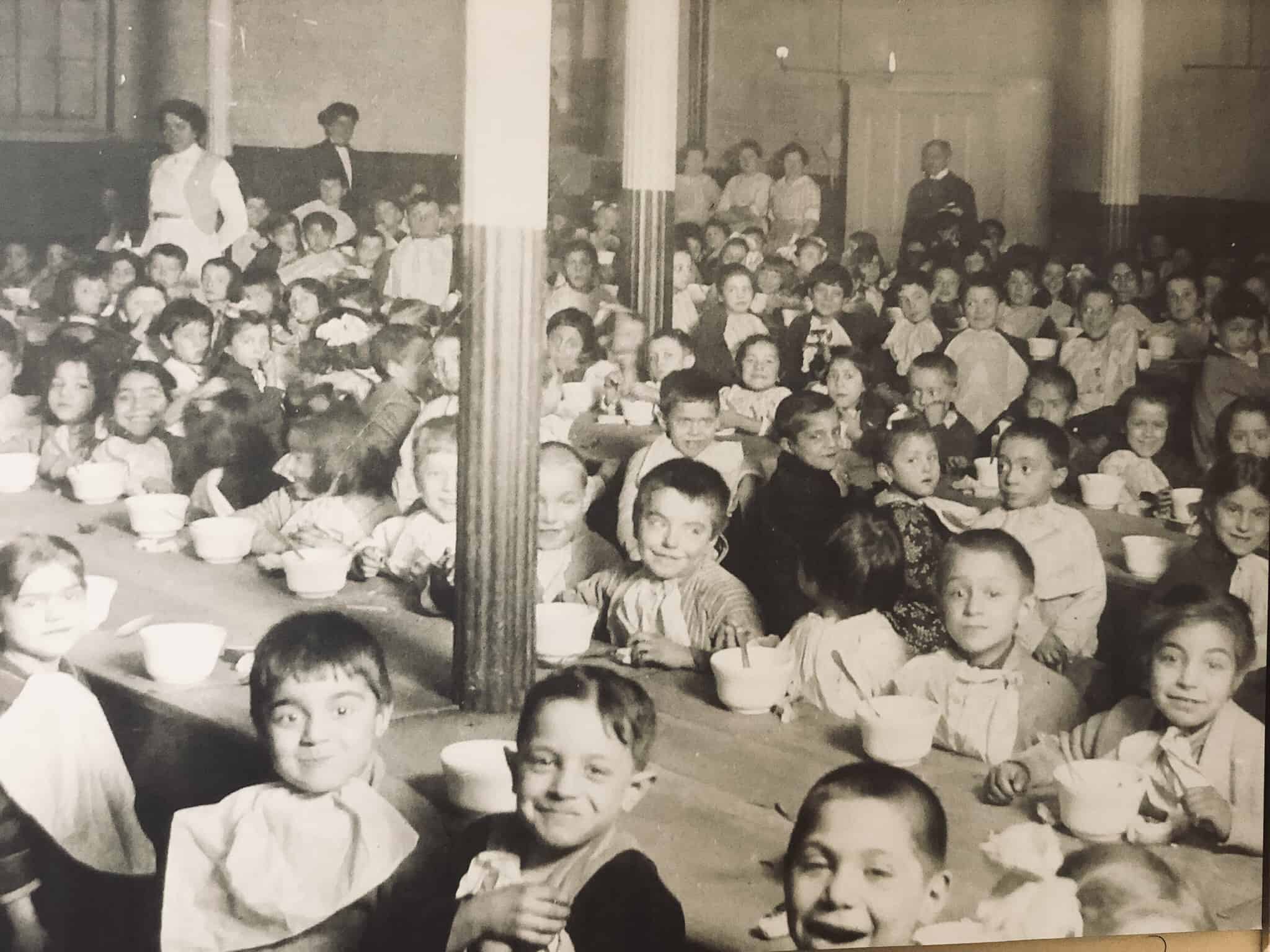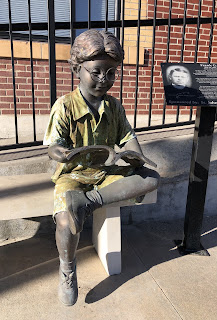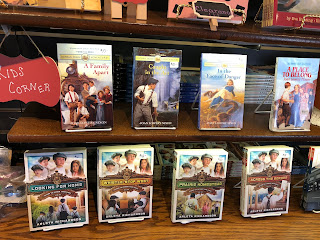I sat on the ground in front of this sweet boy, in Concordia Kansas. His tiny soul touched my heart. There are sculptured images of the children who rode the orphan train all over town. As I encountered each one, I paused to see them. To really see them. And then I wanted to hear them. I knew where to go. The National Orphan Train museum brings their personal experiences to life for us. That is what historians do. They provide us entrance into the past.
Do you know anything about the orphan train? I knew almost nothing. But the title alone elicited a mild alarm in my senses. Who were these children and what became of them?? As I entered, I met Sue, one of the founders. She is compassionately-natured and strong to accomplish a monumentous undertaking. One day, she read about the orphan train and determined to build a museum for it. I was mightily impressed. I hope you get to meet her and hear the story first-hand.
The orphan train functioned from 1854 – 1929: an astounding 75 years. It began in New York City, when many children were left orphaned and homeless, caused by sweeps of fatal diseases, as well as unavailable healthcare. These children then took to the street and gutters, surviving alongside the rats by stealing food, merging into gangs, and taking barbaric jobs for children in factories. Finally, a decision was made to remove the youths from the overflowing orphanages and the streets, and place them onto trains to the Midwest and other parts of the country. The hope was to unite them with caring families in the healthy region of farmlands. So, the two major orphanages began the enormous process. The Children’s Aid Society was a public facility. And the New York Foundling Home was with Catholic Charities. The reasoning for sending out the orphans was multi-dimensional, as the United States was attempting to populate the west, and many farmers needed extra hands to work the fields.
During its run, the train transported 250,000 orphans. A quarter of a million children. The process included agents riding with the orphans, and seeing them placed in homes. Careful notes were taken and the agents returned often to check on the welfare of the children. I was enormously relieved to hear that. Even so, numerous children were gravely mistreated, and suffered. Additionally, the youths were leaving all that was familiar to them, while grieving the loss of both parents (!), and being sent to strange lands and unknown people. The enormity of their adjustment is unfathomable. Yet the process was created to be as flawless as possible. Flyers and newspapers advertised the trains well in advance, and the agencies worked with local communities to scrutinize adopting families.
As I walked through the museum, I was deeply, deeply moved in multiple ways. I was profoundly inspired by the fortitude of the orphans and the tenaciousness of the agents to safeguard the children. I was also pained by the anguish the orphans endured. As I turned a corner, I came upon this photo of depicted sorrow in this precious girl’s expression.
I felt a sudden rush of tears. I knew I was hearing the orphans, and I was seeing them. Only the greatest of museums accomplishes that.
I returned to the office where I was grateful to discover books in the gift shop.
I also met the Archivist. She is a brilliant historian who is organizing and indexing their massive holdings. They have 7,000 files on the riders, as well as boxes of photos!
Please contact the museum if your ancestor was one of the orphans. They will help you find their story. Or if you are a student, a filmmaker, an author, or anyone who appreciates the past, please visit this museum. The work is all done for you, thanks to these impassioned people who have so attentively preserved the life stories of these meaningful souls from a distant era.







